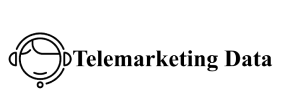Keeping your email list clean is essential for maintaining high deliverability, engagement, and compliance. But knowing how often to clean your email data depends on several factors, including list size, email frequency, and data collection methods. Regular email list maintenance helps you avoid bounced emails, spam complaints, and damage to your sender reputation.
Recommended Frequency for Most Businesses
As a general best practice, businesses should clean their email data at least once every three months. Quarterly cleaning helps catch inactive, bounced, or invalid email addresses before they negatively affect your campaigns. If you’re sending email data emails more frequently (e.g., weekly or daily), consider monthly cleanups instead.
Companies with large email databases or high subscriber turnover (such as eCommerce stores or SaaS providers) may benefit from ongoing or real-time validation—especially at the point of sign-up—to prevent bad data from entering the system in the first place.
Signs It’s Time for a Clean-Up
Sometimes, waiting for a set calendar interval isn’t ideal. You should clean your list immediately if you notice:
-
Increased bounce rates (typically over 2%)
-
Falling open or click-through rates
-
High spam complaint or unsubscribe rates
-
A surge in inactive subscribers over a short period
These are all signs of poor email list hygiene, which could harm your free tools to check for duplicate email records domain reputation and even lead to email service providers flagging your campaigns.
How to Clean Your Email Data
Cleaning your email data involves a few essential steps:
-
Remove invalid or undeliverable emails using tools like ZeroBounce, NeverBounce, or Hunter.
-
Suppress inactive users who haven’t opened emails in taiwan lists the last 3–6 months.
-
Standardize formatting and correct obvious typos, such as “gnail.com” instead of “gmail.com.”
-
Use a double opt-in process to ensure future subscribers are entering valid addresses.
Incorporating email validation tools into your CRM or signup forms also helps maintain a clean list continuously, reducing the need for large periodic overhauls.

